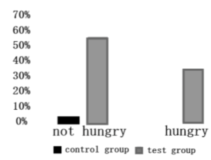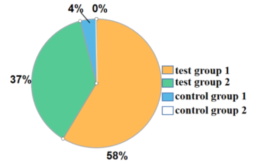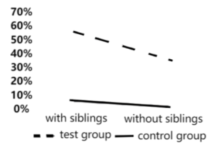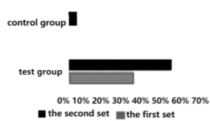1 . For centuries, artists usually give people an impression: they are the “Starving Artists”, struggling to make ends meet. Henri Murger proved that. He was born the son of a doorman in France. Living in Paris, he was surrounded by creative geniuses and dreamed of joining them, but he grew upset with his failure to earn money.
In 1847, Murger published a book. It’s a collection of stories about poverty, which launched the concept of the “Starving Artists” into the public’s understanding as the model for a creative life. To this day, it endures as the model for what we imagine when we think of the word “artist”.
Today, what we forget is that the story of the “Starving Artist” is a myth. In fact, it is really just an imaginary story. Due to the power of this myth in Murger’s book, many of us just want to become lawyers instead of writers, bankers instead of poets, and doctors instead of painters. Nobody wants to struggle ultimately. Thus, we just keep our passion a hobby instead of a career.
In the early Renaissance, artists did not have reputations for being diligent workers. They were considered manual laborers, receiving small amounts of money for their work. Michelangelo Buonarroti, however, changed all that. He was not only a master sculptor but also the most affluent artist of his time. After him, every artist began to see a “new pattern of doing things”, in the words of Bill Wallace, professor of art history at Washington University. Michelangelo established the idea that an artist could become a new figure in society and have a higher social status, and also that he could become financially successful.
Michelangelo did not need to starve for his creations, and neither do you. When we hear the tales and warnings about what it means to be an artist, we must understand an important truth—you don’t have to starve and you might as well make a living from your creative talents.
1. What concept is presented in Henri Murger’s story collection?| A.Artists are not easy to become well known. |
| B.Being creative is not a really good thing sometimes. |
| C.Artists usually experience financial difficulties. |
| D.One has to be a very creative genius to be an artist. |
| A.People’s imagination of artists. | B.People’s various comments on being artists. |
| C.Murger’s understanding of artists. | D.The influence of Murger’s books. |
| A.Wealthy. | B.Controversial. | C.Starving. | D.Humorous. |
| A.To ask people to read more tales. | B.To advise people to make use of their talents. |
| C.To encourage people to lead a rich life. | D.To tell successful artists an important truth. |
2 . Babies appear to know how to help those in need, according to researchers who studied signs of altruism in almost 100 children.
Researchers who wanted to see whether children would give up their food to a stranger without encouragement found the kids did just that — even when they were hungry.
The scientists recruited 96 19-month-old children. During the experiments, a child and a researcher sat across from each other. In the control group of the first set of experiments, researchers threw a piece of fruit onto a plate where they couldn’t reach, but the child could. They then waited. In contrast, researchers in the test group pretended to drop the fruit on the plate, then tried and failed to reach it. This signaled to the child that the adult wanted the food.
Among the control group, only 4 percent of the children gave the piece of fruit to the researchers, compared with 58 percent, or over half, in the test group.
Next, the team explored if children would still be generous when it was at a cost to themselves. The first set of experiments was repeated with a separate group of kids before their lunchtime, when they were likely to be hungry. Similarly, 37 percent of the test group handed over their fruit, compared with none in the control group.
The experiments were repeated four times. Researchers got similar results each time. Babies with siblings (兄弟姐妹) and babies from Latino or Asian families shared more of the fruit, the team also found.
Carter Morgan, lead professor of the study, said, “We often think of babies as selfish. But here we find that they are willing to help others even when it comes at some ‘cost’ to the self.”
Addressing why children with siblings or from certain cultural backgrounds were more likely to share their fruit, Morgan said, “We believe this partly reflects what social psychologists call ‘ interdependence’, which stresses on the importance of interpersonal connections and adjusting to others. These social experiences that shape attitudes towards sharing appear to have an effect very early in life.”
1. The underlined word “altruism” most probably means ________.| A.generosity | B.creativity |
| C.friendliness | D.confidence |
| A.They know when to have lunch. |
| B.They understand signals for help. |
| C.They can classify different fruits. |
| D.They can express their needs freely. |
A. |
B. |
C. |
D. |
| A.Attitudes towards sharing change greatly as people get older. |
| B.Babies from families with an only child are not willing to share. |
| C.It’s easier to control babies’ selfish desires when they are hungry. |
| D.Social experiences play a role in affecting babies’ behavior of sharing. |
3 . What would you think if someone suggested pulling down Big Ben to make way for a car park? It would be ridiculous, right? But when it comes to devastation (毁灭) of the natural world, we aren’t so easily shocked. But we should be...or we’ll be in a lot of trouble.
Nature is shrinking by the day. Ancient forests are destroyed. Wetlands are becoming dry. Woodland is disappearing. And all in the name of progress. This is bad in itself, but it’s devastating for biodiversity.
Biodiversity refers to the variety of plants, animals and other living things which are all inter-connected. The ecological services provided by biodiversity are vital to everyday life. The air we breathe is a product of photosynthesis (光合作用) by green plants. In fact, all life on earth exists thanks to the benefit of biodiversity. More than 90 percent of the calories consumed by people worldwide are produced from 80 plant species. And 30 percent of medicines are developed from plants and animals. Maintaining a wide diversity of species in each ecosystem is necessary to preserve all living things.
The loss of biodiversity could be devastating. “It is wrong to think that biodiversity can be reduced indefinitely without threatening humans,” said Harvard University biologist Edward O. Wilson, known as “the father of biodiversity”. He warned, “we are about to reach a critical point beyond which biodiversity loss will be unavoidable.”
But what can we do? The problem is that the concept of biodiversity is so vague. People might care about giant pandas, but it is much harder to excite them about the fate of tiny sea creatures which are being boiled to death in the cooling systems of power stations along coastlines. The Guardian newspaper is trying to help. It has started the Biodiversity 100 campaign to try to convince governments around the world to take action to deal with the widespread concerns about biodiversity. This includes persuading the UK government to create a series of marine reserves to reverse the decline in sea-life caused by industrial fishing, banning the fishing sharks by the Japanese fishermen and stopping the killing of dingoes in Australia, among many other things.
There is a lot to do. And we’d better get a move on if we don’t want to end up with a planet that can’t support life!
1. What does the author want to tell us by the comparison in paragraph 1?| A.It is unreasonable to pull down Big Ben. | B.People take devastation of nature for granted. |
| C.The differences between Big Ben and nature. | D.The great trouble we have been faced with. |
| A.It doesn’t matter to reduce biodiversity. | B.People have done enough to preserve biodiversity. |
| C.The situation of biodiversity is very serious. | D.Biodiversity loss has become unavoidable. |
| A.The UK government. | B.The concept of biodiversity. |
| C.The action to deal with problem. | D.The Guardian newspaper. |
| A.Biodiversity Battle | B.Biodiversity Loss | C.Planet Conservation | D.Planet Changing |
4 . Destination Unknown
Cheap "blind box" plane tickets become a popular choice for travel.
A promotion offering $15 plane tickets is being advertised by an online travel platform. While such a low price sounds amazing, there is just one rule.
"Plane ticket blind box" is now a hot topic on the online platforms. Henry Fan, a marketing expert said, "I believe young people are a big target group for this promotion, because they not only enjoy the thrill of the unknown, but also like to show off their lives through these types of commercial activities.
Many netizens share the screenshots (截图) of tickets they have drawn.
"If it wants to be a profitable activity, the release of the tickets must have been planned ahead and is not as random as it seems.
| A.It will not have popular airlines. |
| B.It doesn't matter if they finally go or not. |
| C.The promotion has become a hot topic on social media. |
| D.The upcoming holiday is expected to be a major travel period. |
| E.If the date and destination are unsuitable, users may ask for a refund. |
| F.Some even teach the booking procedure under the free canceling policy. |
| G.The purchaser is not told where the flight is heading or when it will take off. |
5 . As we know, mental health is in a worse situation among young people globally.
The average daily screen time for 8-to-18-year-olds was 7.5 hours in the U. S. ten years ago. As the study states, “This greatly goes above guidelines of 2 hours per day.” Now the condition is worse by the fact that so many schools are using technology to teach classes. Indeed some screen time can promote connections and enable tasks to be done more efficiently.
The study authors suggest that green time could act as a cure for screen time, essentially balancing its negative effects.
| A.Teenagers urgently need more green time. |
| B.Screen-based technology makes kids less attentive. |
| C.The frequency of depression and anxiety is increasing. |
| D.There are many more ways, nevertheless , in which it is harmful. |
| E.It suggests more outdoor projects like building parks could be fundamental. |
| F.Paying constant directed attention to screens can raise directed attention tiredness. |
| G.This study highlights that nature may currently be a potential public health resource. |
6 . Almost every community has some form of rules and some way of enforcing them. So why do we have rules, and what makes people follow them?
Studies have suggested that the reason we don't like rule-breaking is because fairness is programmed into our brains. Scientists have found that the brain reacts in a particular way when we feel we are being treated unfairly.A fair situation makes us feel comfortable and even happy, but unfairness causes our brains to respond with negative feelings.The study found that this a so happened when subjects saw others being treated unfairly. They concluded that fairness is one of basic human needs.
Arriving at a feeling of fairness means considering different, often conflicting, points of view. Regardless of the disagreement, people almost always need to compromise. But it can be difficult to arrive at a compromise when there are conflicting interests. This is why communities have rules that everyone must follow.
Social controls are an important factor in setting and following rules.They influence the way we be have, and can be internal (内在的) or external. Internal controls come from within and are based on our values and fears. Most of us don't steal, for example, because we believe that theft is unfair and wrong. We also don't want to disappoint our family and friends. In other words, our internal controls keep us from behaving in ways that cause conflict.
External controls include rewards and punishments. Rewards, such as job promotions and praise, are designed to encourage people to be have and actin the interest of the whole community.
Punishments, such as public embarrassment, fines, and even imprisonment can prevent people from acting against the community's best interests.
People need their communities to function smoothly.If there were no rules, most people would probably still behave positively. However, there would always be a minority who would not. This is why a society without rules is unlikely to exist.
1. What does the underlined word ''this'' in paragraph 2 refer to?| A.A program in human brains. |
| B.A comfortable situation. |
| C.The response with bad feelings. |
| D.The requirement off fairness. |
| A.To punish illegal activities. | B.To prevent disagreement. |
| C.To promote fairness. | D.To meet various demands. |
| A.Take exams honestly because cheating is shameful |
| B.Park in the right place so as not to get a parking ticket. |
| C.Pay the electricity bill on time in order not to get a late fee. |
| D.Cooperate with your classmates to win a prize for your class. |
| A.Living by the rules | B.Why communities need rules |
| C.Reaching a compromise | D.How fairness functions |
7 . When we were kids, if our parents wanted us to stop the screen time, they would turn off the TV.
First, limit the time they use screens.
And third, hide the screen device. That one may not seem very fair.
Ultimately, the best way to help kids recognize how much is too much screen time is to limit our own. Yeah, you may have to stare at one all day for your job, but do you really have to come home and immediately turn on the TV or answer that email on your phone? Don’t think your kids aren’t taking excuses from your actions.
| A.Second, give them an alternative. |
| B.So, it’s necessary to set a limited time. |
| C.It may seem easy, but it can be challenging. |
| D.Now, kids often have a choice of which screen they want. |
| E.They watch you just as closely as they watch those screens. |
| F.Now go to find a screen and turn it off, for you and for your kids. |
| G.But the phrase “out of sight, out of mind” actually works sometimes. |
8 . Many of us deal with mental health challenges on a daily basis. Being fed a steady diet of destructive world events only serves to make that harder, So I've decided to share a few strategies to avoid being completely broken down by the newsfeed right now.
You’ll find it easier to make this mental mindshift if you make a conscious effort to boost your level of positive emotion by doing things you enjoy and spending time with people you love. Positive emotions leave the door open to possibility while negative emotions keep the door shut.
Recognize that there’s a difference between being absorbed and being informed
Sure, you want to be aware of what's happening in the world, but that doesn’t mean that you have to be absorbed into your Twitter or Facebook and aim for a balanced media diet.
Look for opportunities to take action
Reach out-don't break down Inward
Connect with other caring citizens who share your concern about what's happening in our country and our world. Talk to other people you know who may be going through an especially difficult time right now.
| A.It doesn’t have to be something huge |
| B.Say no sometimes |
| C.Hold your sense of optimism |
| D.Let them know that you will be there to support them and that you care |
| E.Feeling powerless fuels anxiety, taking action brings it down |
| F.Don't just focus on the really bad news |
| G.Doing good deeds can also relax social anxiety |
9 . Feifei, an 11-year-old boy from Xuzhou, Jiangsu Province, suffered from a sudden acute eye disease which has almost led to blindness. The disease was caused by excessive(过度的)eye fatigue(疲劳)during the winter vacation, during which he played computer games for continuous 10 days and nights.
Many youngsters in China nowadays are increasingly addicted to computer games and other electronic products. This is followed by a series of health problems, with the most typical case being myopia, or nearsightedness.
According to the latest research report released by the World Health Organization (WHO), the myopia rate among Chinese teenagers ranks first in the world—70 percent of high school and college students. The rate is nearly 40 percent in primary school students, while it is only 10 percent for their peers in the United States.
There are at least 10 million people in China with severe myopia, and they are likely to get pathological(病理性的)myopia in middle age. Pathological myopia can't be treated with glasses or surgery, and it is one of the biggest factors that lead to blindness, Xu Xun, director of the ophthalmology(眼科学) department at Shanghai General Hospital, pointed out.
Experts explain that two major factors lead to the high rate of myopia among Chinese people. One is high academic pressure, and the other one is excessive use of electronic devices over a long period of time. Genetics, on the other hand, are not the main reason, as only 20 percent of Chinese people had myopia in the 1960s.
"Teenagers are now faced with severe academic pressure, which means they often study without natural light. This increases their risk of becoming nearsighted," Xu said.
Experts suggest that youngsters maintain a proper balance between study and rest so as to protect their eyesight, and parents should play an active role in the process.
1. Why does the author mention Feifei's experience in the first paragraph?| A.To advise people to protect their eyes. |
| B.To introduce the topic of nearsightedness. |
| C.To inform people of the cause of blindness. |
| D.To show that Feifei developed an eye disease. |
| A.Nearsightedness may cause other health problems. |
| B.There are more nearsighted students in the United States. |
| C.70 percent Chinese students in primary school are nearsighted. |
| D.Pathological myopia is most likely to cause blindness. |
| A.Genetics factors. |
| B.Low academic pressure. |
| C.Overuse of electronic devices. |
| D.Reading in natural light. |
| A.The significance of protecting eyesight. |
| B.Youngsters’ bad behavior leading to myopia. |
| C.The relationship between youngsters and their parents. |
| D.Parents’ role in helping youngsters protect their eyesight. |



